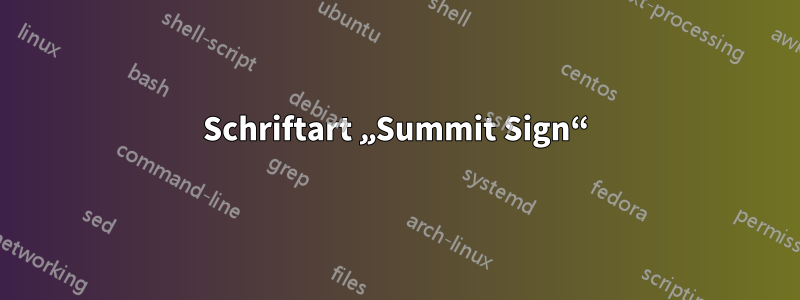
Antwort1
Aktualisierung 1: 03.05.2024
Das \sumSymbol stammt aus dem Paket txfonts(oder Sie können es von übernehmen Libertinus Math): siehe kurzes MWE und der Abbildung.
%% Compile and read me!
\documentclass[a4paper,12pt]{article}
\usepackage{txfonts}
\usepackage[T1]{fontenc}
\begin{document}
\[\sum^{n}_{i=1}{xcv}\]
\end{document}
Mit dem Motor XeLaTeX: Für meine bescheidene Meinung sehr nahe \sumSymbol ist gegeben vonSTIX Zwei Mathematik. Ich habe es auch versucht Cambria Math(siehe 2. Code), aber es ist groß: Es ist jedoch möglich, das Symbol mit dem Paket vertikal zu strecken scalerel(ich habe es nicht versucht). Wenn Sie die gängige Schriftart kennen, brechen Sie ab STIX Two Mathund geben den Namen der Schriftart ein.
\documentclass[12pt]{article}
\usepackage{unicode-math}
\setmathfont{Latin Modern Math}
\setmathfont[range={\sum}, Scale=MatchUppercase]{STIX Two Math}
\let\mathbb\relax % remove the definition by unicode-math
\DeclareMathAlphabet{\mathbb}{U}{msb}{m}{n}
\begin{document}
The range of matrix $A\in\mathbb{K}^{I\times J}$ is
\[
\operatorname{range}(A)=\{Ax\colon x\in\mathbb{K}^{J}\}=\operatorname{span}\{A_{(j)},i\in J\}.
\]
Hence, the range of a matrix is a vector space spanned by its columns. The Euclidean scalar product in $\mathbb{K}^I$ is given by.
\[\langle x,y\rangle=y^Hx=\sum_{i\in I}x_i\bar{y}_i,\]
where for $\mathbb{K}=\mathbb{R}$ the conjugate sign can be ignored. It is often useful and very
\end{document}
oder mit Cambria Math:
\documentclass[12pt]{article}
\usepackage{unicode-math}
\setmathfont{Latin Modern Math}
\setmathfont[range={\sum}, Scale=MatchUppercase]{Cambria Math}
\let\mathbb\relax % remove the definition by unicode-math
\DeclareMathAlphabet{\mathbb}{U}{msb}{m}{n}
\begin{document}
The range of matrix $A\in\mathbb{K}^{I\times J}$ is
\[
\operatorname{range}(A)=\{Ax\colon x\in\mathbb{K}^{J}\}=\operatorname{span}\{A_{(j)},i\in J\}.
\]
Hence, the range of a matrix is a vector space spanned by its columns. The Euclidean scalar product in $\mathbb{K}^I$ is given by.
\[\langle x,y\rangle=y^Hx=\sum_{i\in I}x_i\bar{y}_i,\]
where for $\mathbb{K}=\mathbb{R}$ the conjugate sign can be ignored. It is often useful and very
\end{document}
Sie können auch dies sehen TeX Gyre Pagella Math(gut):
\documentclass[12pt]{article}
\usepackage{unicode-math}
\setmathfont{Latin Modern Math}
\setmathfont[range={\sum}, Scale=MatchUppercase]{TeX Gyre Pagella Math}
\let\mathbb\relax % remove the definition by unicode-math
\DeclareMathAlphabet{\mathbb}{U}{msb}{m}{n}
\begin{document}
The range of matrix $A\in\mathbb{K}^{I\times J}$ is
\[
\operatorname{range}(A)=\{Ax\colon x\in\mathbb{K}^{J}\}=\operatorname{span}\{A_{(j)},i\in J\}.
\]
Hence, the range of a matrix is a vector space spanned by its colunns. The Euclidean scalar product in $\mathbb{K}^I$ is given by.
\[\langle x,y\rangle=y^Hx=\sum_{i\in I}x_i\bar{y}_i,\]
where for $\mathbb{K}=\mathbb{R}$ the conjugate sign can be ignored. It is often useful and very
\end{document}
im TeX Gyre Termes MathGuten):








